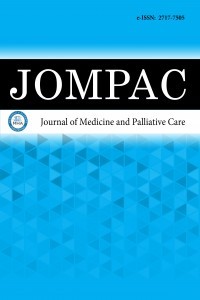1.
Ziessman HA, O’Malley JP, Thrall JH. (2013). Nuclear medicine:the requisites e-book. Elsevier Health Sciences.
2.
Signore A, Jamar F, Israel O, Buscombe J, Martin-Comin J, LazzeriE. Clinical indications, image acquisition and data interpretationfor white blood cells and anti-granulocyte monoclonal antibodyscintigraphy: an EANM procedural guideline. Eur J Nucl MedMol Imaging. 2018;45(10):1816-1831. doi:10.1007/s00259-018-4052-x
3.
Love C, Marwin SE, Tomas MB, et al. Diagnosing infection in thefailed joint replacement: a comparison of coincidence detection18F-FDG and 111In-labeled leukocyte/99mTc-sulfur colloidmarrow imaging. J Nucl Med. 2004;45(11):1864-1871.
4.
Palestro CJ. Radionuclide imaging of osteomyelitis. Semin NuclMed. 2015;45(1):32-46. doi:10.1053/j.semnuclmed.2014.07.005
5.
Datz FL. Indium-111-labeled leukocytes for the detection ofinfection: current status. Semin Nucl Med. 1994;24(2):92-109.
6.
Yaylali O. The role of molecular imaging methods in orthopedicprosthetic infections/Ortopedik protez enfeksiyonlarindamolekuler görüntüleme yöntemlerinin rolü. Nuclear MedicineSeminars. Vol. 2. No. 2. Galenos Yayinevi Tic. Ltd., 2016.
7.
Velasco Á, Rodríguez-Revuelta J, Olié E, et al. Neutrophil-to-lymphocyte ratio: a potential new peripheral biomarker ofsuicidal behavior. Eur Psychiatry. 2020;63(1):e14. doi:10.1192/j.eurpsy.2019.20
8.
Sun H, Que J, Peng Y, et al. The neutrophil-lymphocyte ratio: apromising predictor of mortality in coronary care unit patients- a cohort study. Int Immunopharmacol. 2019;74:105692.doi:10.1016/j.intimp.2019.105692
9.
Bilen MA, Martini DJ, Liu Y, et al. The prognostic and predictiveimpact of inflammatory biomarkers in patients who haveadvanced-stage cancer treated with immunotherapy. Cancer.2019;125(1):127-134. doi:10.1002/cncr.31778
10.
Hu J, Zhou W, Zhou Z, Han J, Dong W. Elevated neutrophil-to-lymphocyte and platelet-to-lymphocyte ratios predict post-stroke depression with acute ischemic stroke. Exp Ther Med.2020;19(4):2497-2504. doi:10.3892/etm.2020.8514
11.
Huang G, Chen H, Wang Q, et al. High platelet-to-lymphocyteratio are associated with post-stroke depression. J Affect Disord.2019;246:105-111. doi:10.1016/j.jad.2018.12.012
12.
Hu B, Yang XR, Xu Y, et al. Systemic immune-inflammationindex predicts prognosis of patients after curative resection forhepatocellular carcinoma. Clin Cancer Res. 2014;20(23):6212-6222. doi:10.1158/1078-0432.CCR-14-0442
13.
Tong YS, Tan J, Zhou XL, Song YQ, Song YJ. Systemic immune-inflammation index predicting chemoradiation resistance andpoor outcome in patients with stage III non-small cell lungcancer. J Transl Med. 2017;15(1):221. doi:10.1186/s12967-017-1326-1
14.
Govaert GAM, Bosch P, IJpma FFA, et al. High diagnosticaccuracy of white blood cell scintigraphy for fracture relatedinfections: Results of a large retrospective single-center study.Injury. 2018;49(6):1085-1090. doi:10.1016/j.injury.2018.03.018
15.
Granados U, Fuster D, Soriano A, et al. Cribado medianteangiogammagrafía previo a la realización de gammagrafía conleucocitos (99m)Tc-HMPAO en el diagnóstico de infección deprótesis articulares [Screening with angiographic images priorto (99m)Tc-HMPAO labelled leukocyte scintigraphy in thediagnosis of periprosthetic infection]. Rev Esp Med Nucl ImagenMol. 2015;34(4):219-224. doi:10.1016/j.remn.2014.10.003
16.
Şener K, Çakır A, Kılavuz H, Altuğ E, Güven R. Diagnosticvalue of systemic immune inflammation index in acuteappendicitis. Rev Assoc Med Bras (1992). 2023;69(2):291-296.doi:10.1590/1806-9282.20221003
17.
Ozer Balin S, Ozcan EC, Uğur K. A New Inflammatory Markerof Clinical and Diagnostic Importance in Diabetic FootInfection: Systemic Immune-Inflammation Index [publishedonline ahead of print, 2022 Oct 11]. Int J Low Extrem Wounds.2022;15347346221130817. doi:10.1177/15347346221130817
18.
Wang RH, Wen WX, Jiang ZP, et al. The clinical value ofneutrophil-to-lymphocyte ratio (NLR), systemic immune-inflammation index (SII), platelet-to-lymphocyte ratio (PLR)and systemic inflammation response index (SIRI) for predictingthe occurrence and severity of pneumonia in patients withintracerebral hemorrhage. Front Immunol. 2023;14:1115031.Published 2023 Feb 13. doi:10.3389/fimmu.2023.1115031
19.
Carpio-Orantes LD, García-Méndez S, Hernández-HernándezSN. Neutrophil-to-lymphocyte ratio, platelet-to-lymphocyteratio and systemic immune-inflammation index in patientswith COVID-19-associated pneumonia. Índices neutrófilo/linfocito, plaqueta/linfocito e inmunidad/inflamación sistémicaen pacientes con neumonía por COVID-19. Gac Med Mex.2020;156(6):527-531. doi:10.24875/GMM.M21000480
20.
Asik Z. The Role of the NLR and PLR in urinary tractinfection. Clin Lab. 2021;67(10):10.7754/Clin.Lab.2021.210133.doi:10.7754/Clin.Lab.2021.210133
21.
Yang AP, Liu JP, Tao WQ, Li HM. The diagnostic andpredictive role of NLR, d-NLR and PLR in COVID-19patients. Int Immunopharmacol. 2020;84:106504. doi:10.1016/j.intimp.2020.106504

